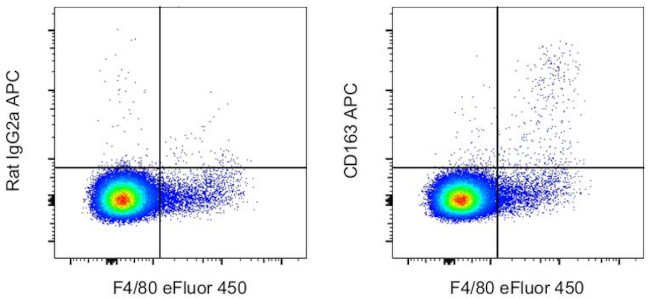Search Thermo Fisher Scientific
Invitrogen
CD163 Monoclonal Antibody (TNKUPJ), APC, eBioscience™
FIGURE: 1 / 12
CD163 Antibody (17-1631-82) in Flow


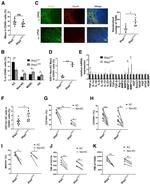

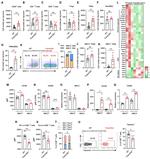
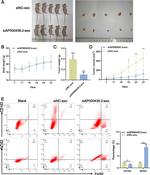
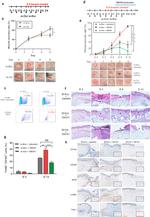
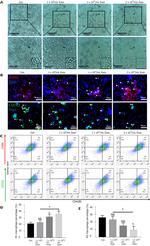
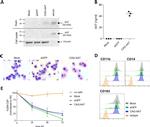
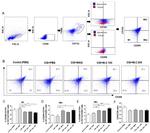
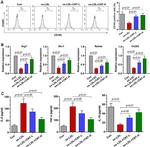

Product Details
17-1631-82
Species Reactivity
Published species
Host/Isotype
Recommended Isotype Control
Class
Type
Clone
Conjugate
Excitation/Emission Max
Form
Concentration
Purification
Storage buffer
Contains
Storage conditions
Shipping conditions
RRID
Product Specific Information
Description: This TNKUPJ monoclonal antibody recognizes mouse CD163. CD163 is a 130kDa surface receptor expressed by certain subsets of tissue macrophages, including splenic red pulp macrophages, Kupffer cells, intestinal lamina propria macrophages and a small fraction of peritoneal macrophages. In contrast to human blood monocytes, mouse monocytes do not express CD163. Also, unlike human CD163, mouse CD163 is not as readily induced by M2 polarizing cytokines, and it is not a good marker of M2 macrophages. No common cell lines of monocytic or macrophage origin express mouse CD163. In humans, CD163 has been shown to be proteolytically cleaved and shed from the cell surface, and it acts as a soluble anti-inflammatory factor.
This TNKUPJ antibody will detect CD163 on fixed and permeabilized cells allowing for staining of the intracellular pool of this receptor. Although CD163 is relatively stable to collagenase digestion, aggressive tissue dissociation protocols might potentially decrease the amount of surface CD163. In these cases intracellular detection is recommended.
Applications Reported: This TNKUPJ antibody has been reported for use in flow cytometric analysis.
Applications Tested: This TNKUPJ antibody has been tested by flow cytometric analysis of mouse splenocytes. This may be used at less than or equal to 0.25 µg per test. A test is defined as the amount (µg) of antibody that will stain a cell sample in a final volume of 100 µL. Cell number should be determined empirically but can range from 10^5 to 10^8 cells/test. It is recommended that the antibody be carefully titrated for optimal performance in the assay of interest.
Excitation: 633-647 nm; Emission: 660 nm; Laser: Red Laser
Target Information
CD163 (M130 antigen, Ber-Mac3, Ki-M8, SM4) is a 130 kDa membrane glycoprotein, a member of the scavenger receptor cysteine-rich superfamily, and a receptor for the hemoglobin-haptoglobin complex. CD163 protects tissues from free hemoglobin-mediated oxidative damage, and may play a role in the uptake and recycling of iron, via endocytosis of hemoglobin/haptoglobin and subsequent breakdown of heme. CD163 is expressed exclusively on the cell surface of human monocytes and macrophages that evolve predominantly in the late phase of inflammation. Specifically, CD163 is present on all circulating monocytes and most tissue macrophages except those found in the mantle zone and germinal centers of lymphoid follicles, interdigitating reticulum cells and Langerhan's cells. CD163 is present on all CD14 positive monocytes, most CD64 positive monocytes, and shows higher expression on CD16 positive monocytes. CD163 is upregulated on mononuclear phagocytes by IL-10, IL-6 and dexamethasone. Lipopolysaccharide (LPS) and phorbol myristate acetate (PMA) both induce shedding of CD163 from the cell surface into plasma or cell supernatant. CD163 binds hemoglobin/haptoglobin complexes in a calcium-dependent and pH-dependent manner, and exhibits a higher affinity for complexes of hemoglobin and multimeric haptoglobin of HP1F phenotype than for complexes of hemoglobin and dimeric haptoglobin of HP1S phenotype. Further, CD163 also induces a cascade of intracellular signals that involves tyrosine kinase-dependent calcium mobilization, inositol triphosphate production and secretion of IL6 and CSF1.
For Research Use Only. Not for use in diagnostic procedures. Not for resale without express authorization.
How to use the Panel Builder
Watch the video to learn how to use the Invitrogen Flow Cytometry Panel Builder to build your next flow cytometry panel in 5 easy steps.
Bioinformatics
Protein Aliases: CD163; Scavenger receptor cysteine-rich type 1 protein M130; Soluble sCD163
Gene Aliases: Cd163; CD163v2; CD163v3; M130
UniProt ID: (Mouse) Q2VLH6
Entrez Gene ID: (Mouse) 93671

Performance Guarantee
If an Invitrogen™ antibody doesn't perform as described on our website or datasheet,we'll replace the product at no cost to you, or provide you with a credit for a future purchase.*
Learn more
We're here to help
Get expert recommendations for common problems or connect directly with an on staff expert for technical assistance related to applications, equipment and general product use.
Contact tech support
